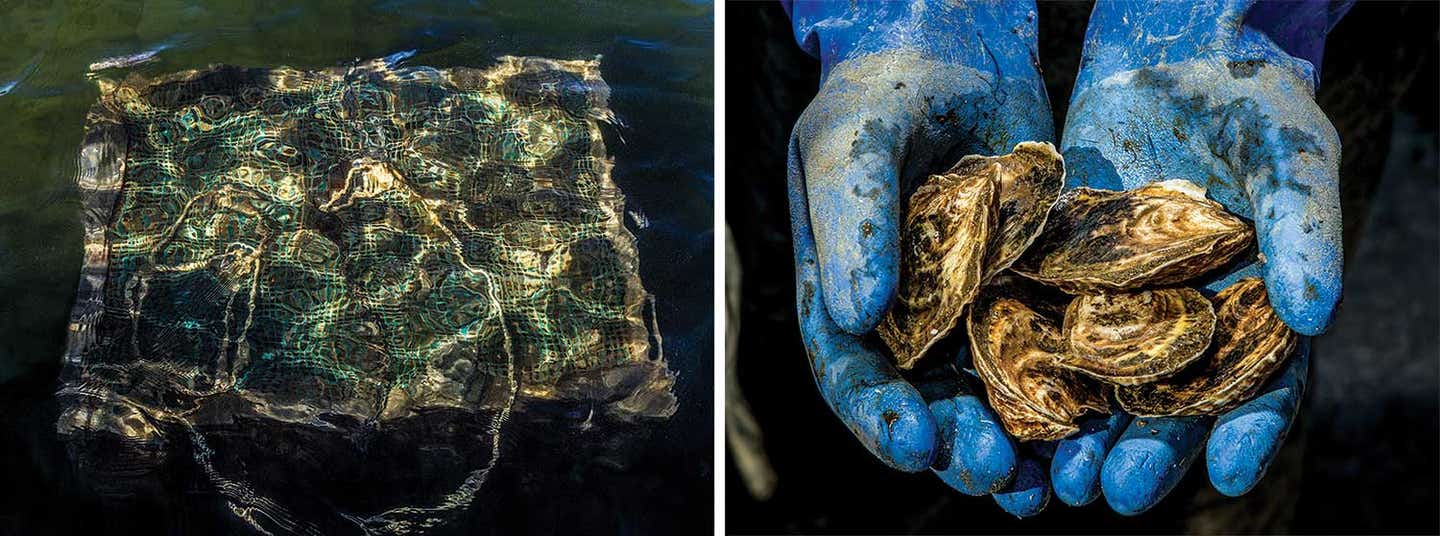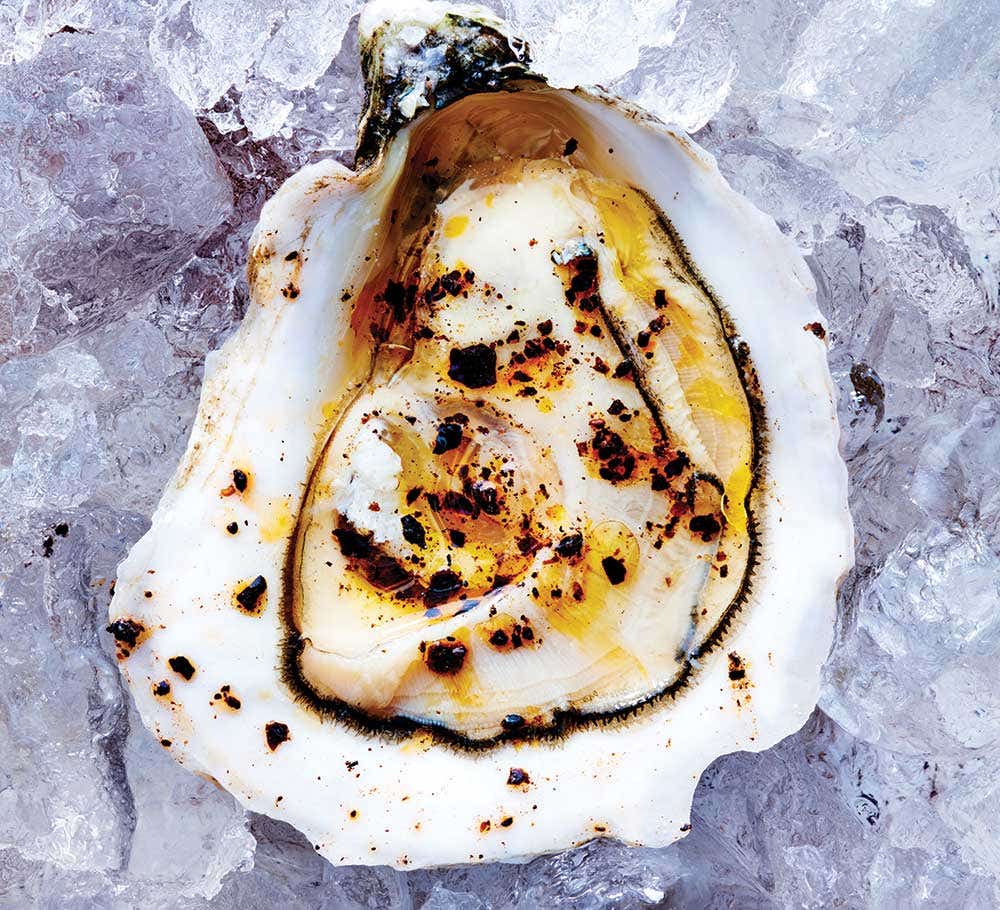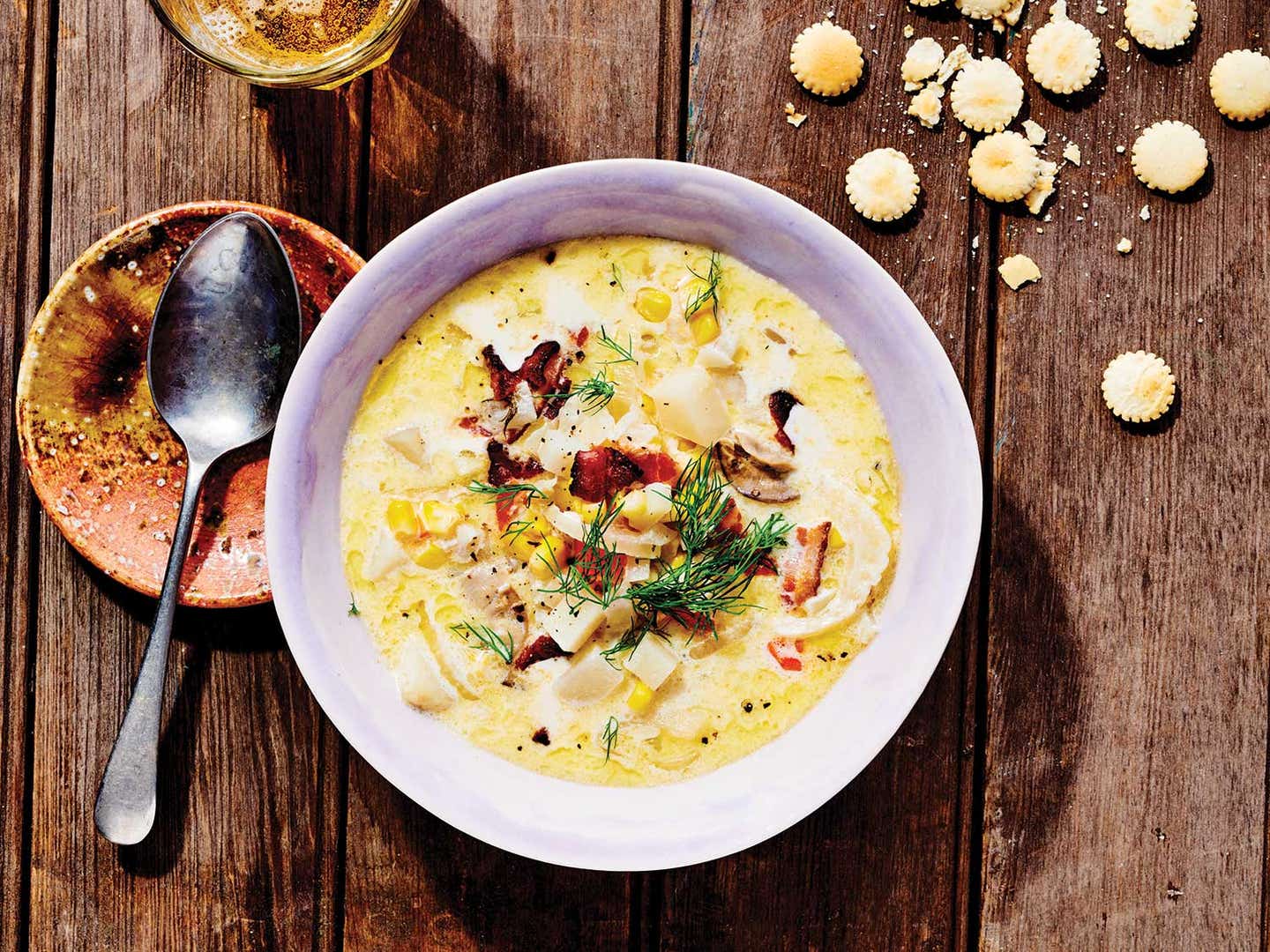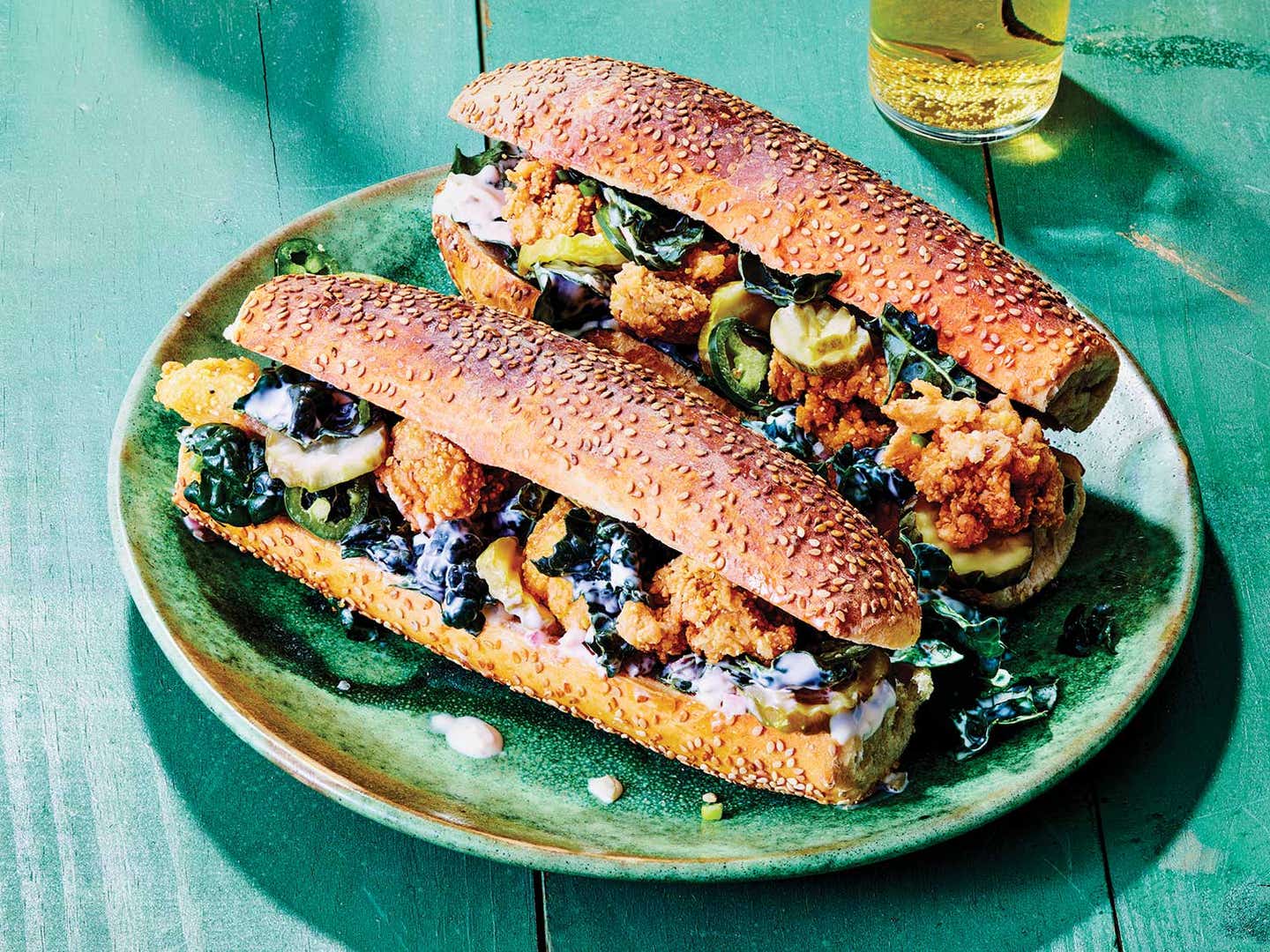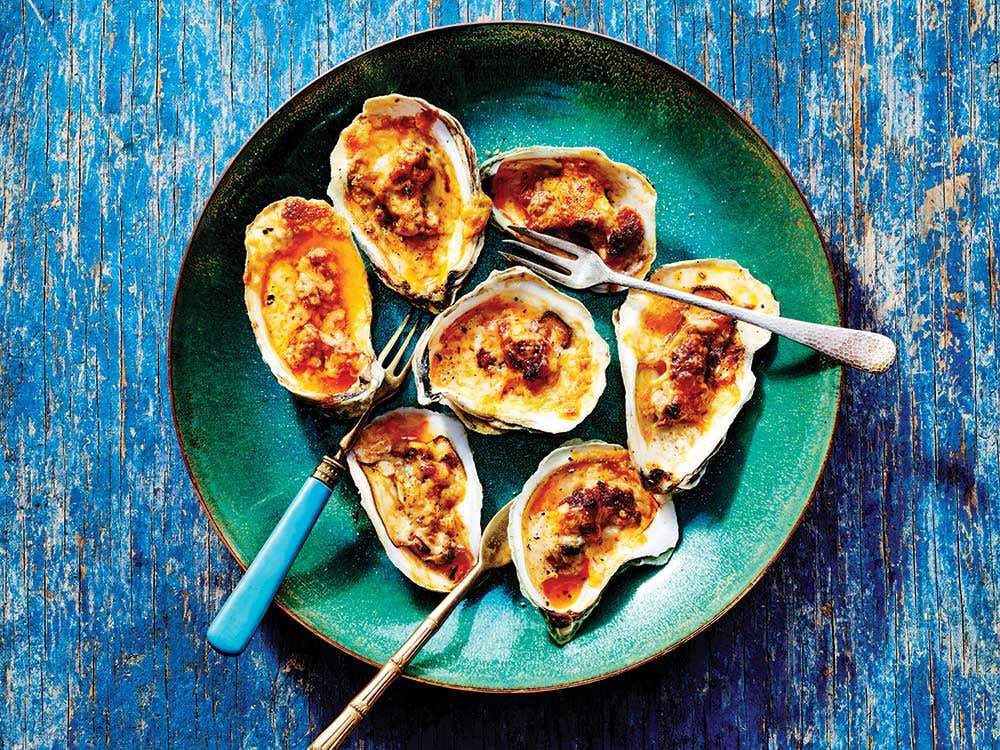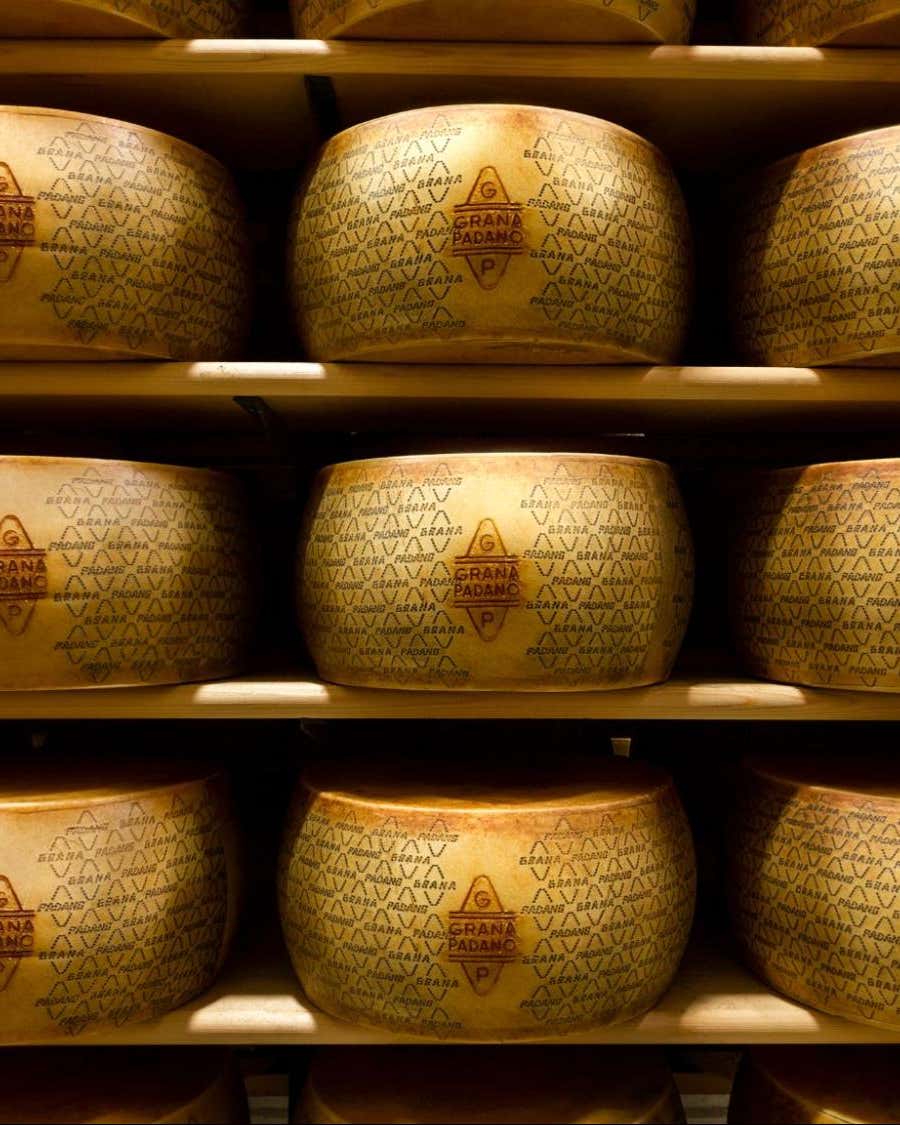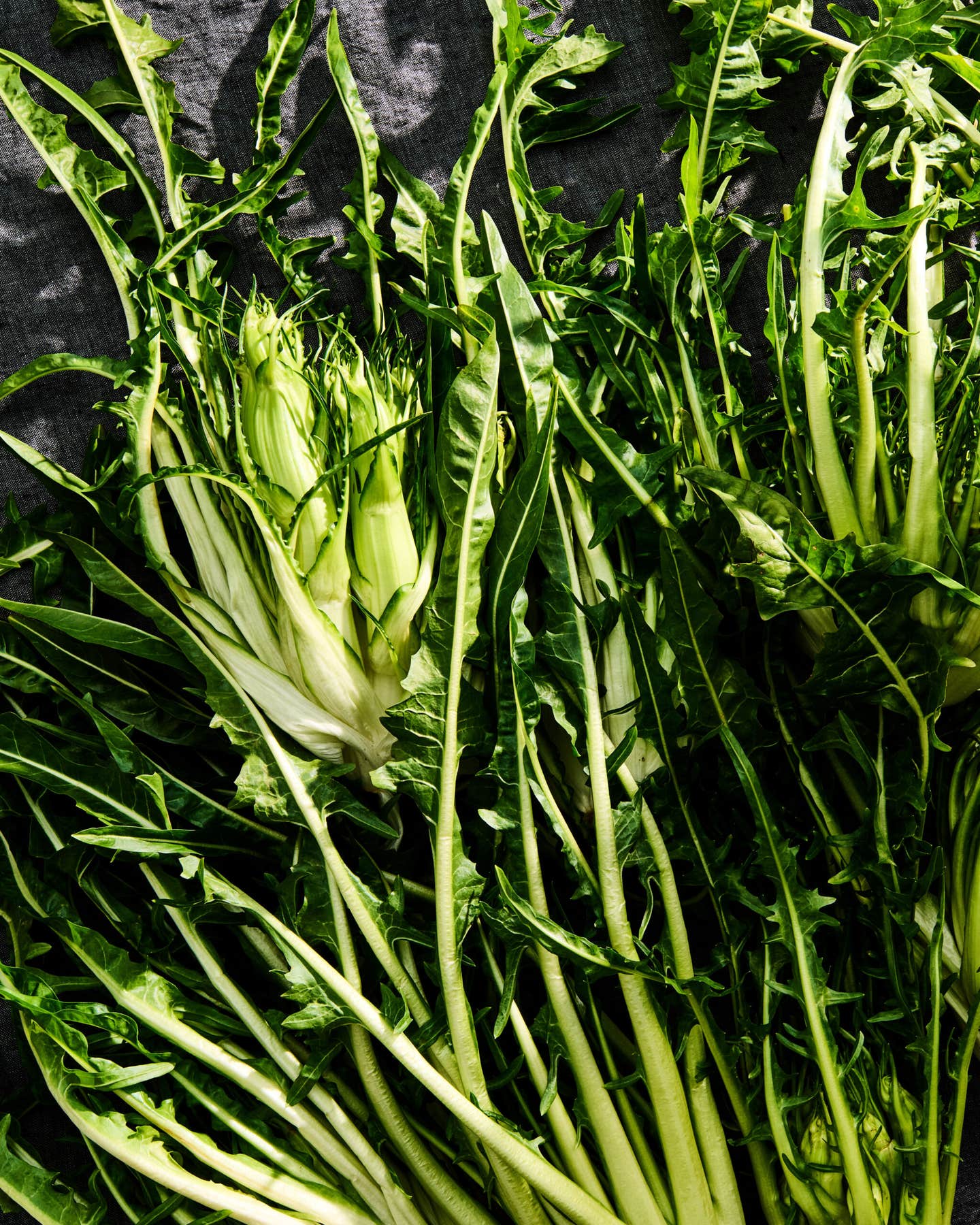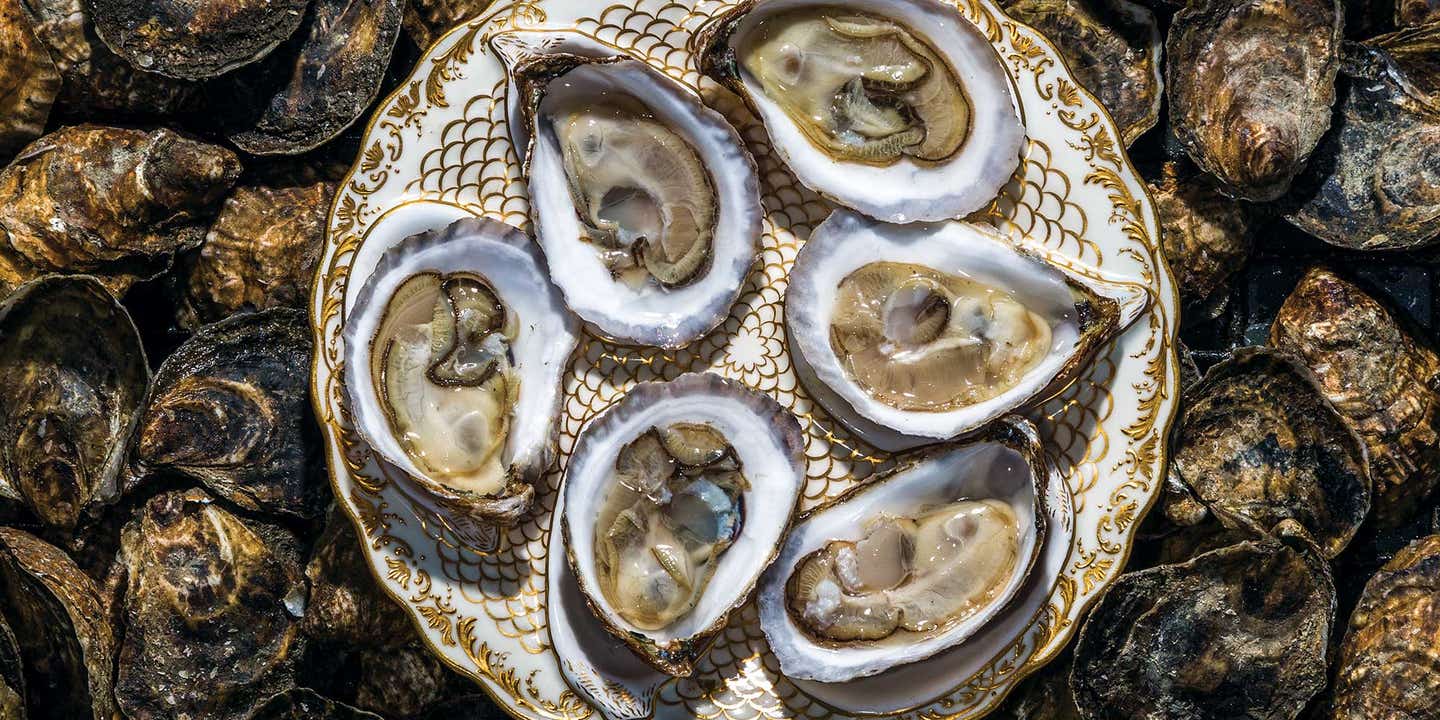
This Oyster Farmer Ditched His Desk Job for Life on the Water
The closest oysters to the city of New York are raised off the coast of Long Island
Long before it was famous for pizza or dirty-water dogs or cronuts, New York was a city of oysters. Prior to the turn of the 20th century, oysters were both a junk food and a delicacy—sold from carts with hot corn and peanuts, and served in restaurants in dozens of styles. The oyster beds of New York Harbor were said to produce about half the world’s supply. When Charles Dickens came to town in 1842, he made a special point to go slumming and visit one of the city’s notoriously rough oyster cellars. Piles of discarded shells in the street were a smelly monument to a city on the rise. By the time city officials figured out it was best just to dump them back into the water, the moment had passed. By then, the harbor and surrounding rivers were toxic. The last local beds closed for good in 1927.
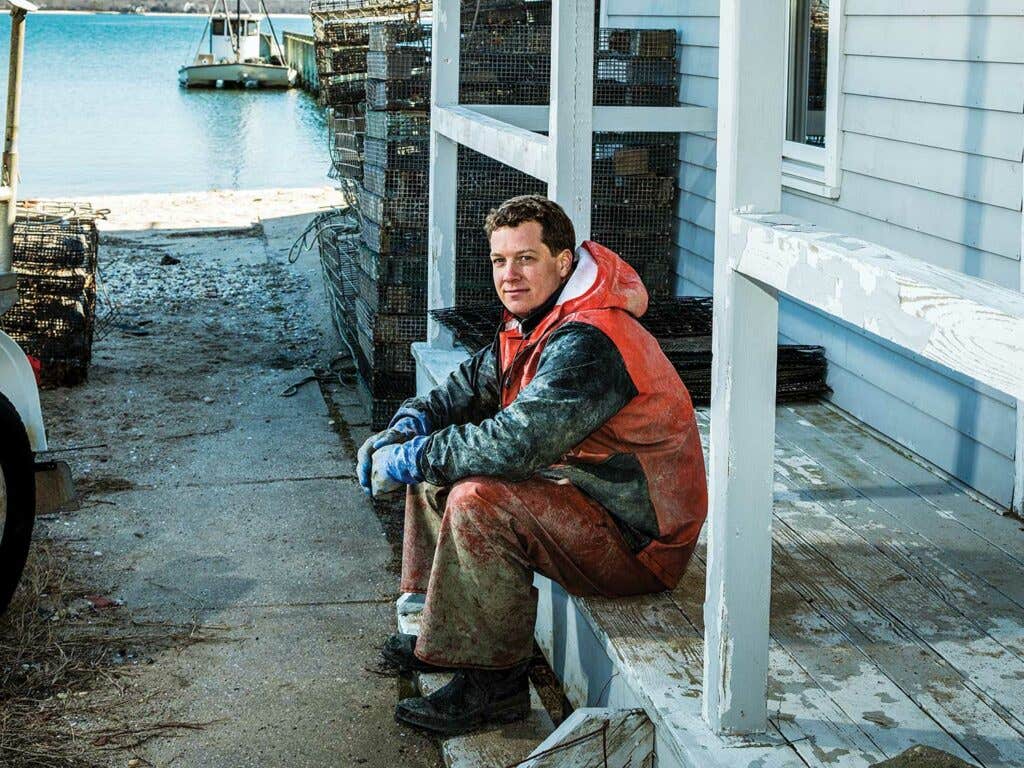
Now the closest oysters to the city of New York are raised off the coast of Long Island. This is where I went to visit Peeko Oysters, a farm near the village of New Suffolk that started doing business in 2016. The new operation is still small—founder Peter Stein and two employees, Mark Pagano and Chris Coyne. Nonetheless, in 2017, the three-man, one-boat shellfish startup had oysters on the menus of New York City restaurants such as Oceania and Gramercy Tavern.
Peeko takes its name from the Little Peconic Bay, the body of water between the two forks at the east end of Long Island. Arriving at the farm on a sunny winter day, I found myself in a strange hybrid place that felt much farther than two hours from Manhattan—one-part charming Midwestern farm town, one-part rocky New England coast. Stein, Pagano, and Coyne were wearing the sort of rubberized bibs made famous by guys on boxes of fish sticks. Their barge, La Perla, was so achingly quaint, it was hard to believe it was actual equipment used in commercial aquaculture. The plywood deck is 32 feet long, with a wooden pilot house that looks like a telephone booth, and a tall, metal mast with a dangling winch. Pagano stooped down to a motor on the deck and flipped a switch, sending the winch hook into the water. It emerged from the bay with a big metal cage about the size and shape of a Little Tikes playhouse. Its mesh hung damp with such nice kelp that it looked like decor from a divey tiki bar or a prop from The Pirates of Penzance. I half expected everyone to break into song.
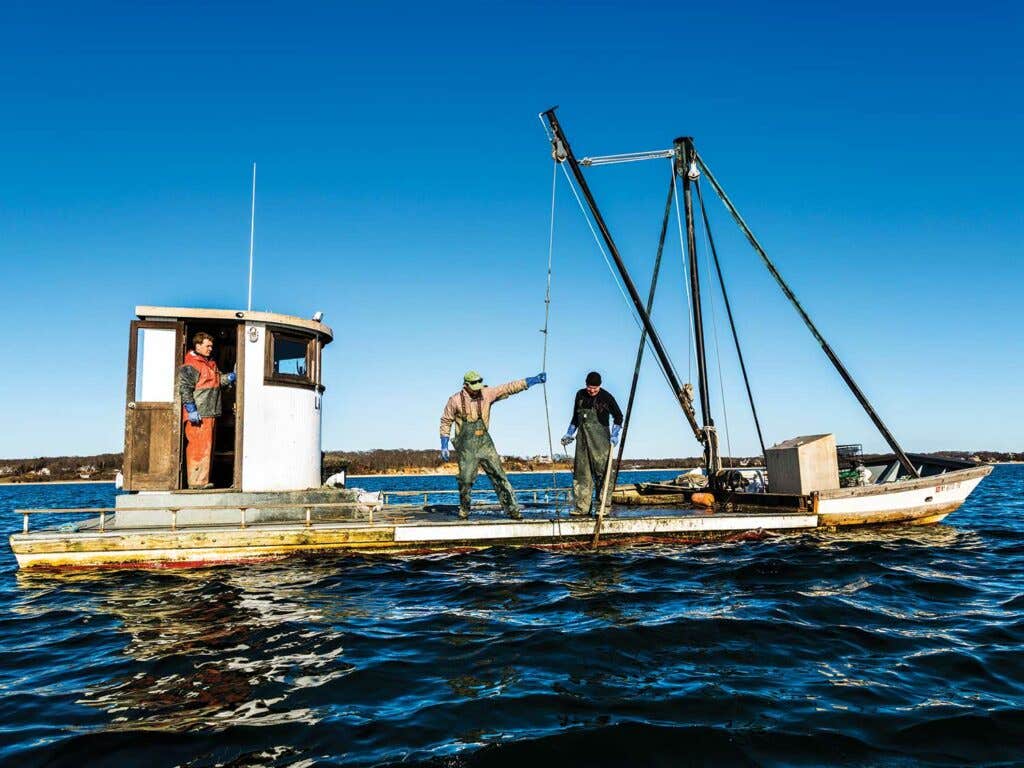
For all the times I’ve ordered them off chalkboards by location—Penn Cove, Blue Point, Chesapeake Bay—I never had an actual image of where the shellfish came from. Turns out, an aquaculture farm is just a bunch of metal cages sitting somewhere on the bottom of a bay, marked by floating buoys on the surface. Stein bought his bottom land from an older oyster farmer who was looking to downsize before he retired. Seafaring locals might know its location by proximity to something called Buoy 18. The landlocked might find more success by drawing a line between Cedar Beach Point and Nassau Point; Peeko Oysters is roughly in the middle. Its distance from dry land was why it was a bargain. Miles away from any real bathroom, the barge carries a bucket on board labeled human waste.
Other than that, La Perla could be worse, as offices go. Out on the open water of the Peconic the day I visited, the surface was blue and screensaver calm. Coyne and Pagano unhinged the cage and lifted the first tray of oysters off the top. Their shells caught the midday light like cartoon treasure. It was thrilling to see an expensive delicacy in so many more half dozens than usual. A single cage holds 10 trays with anywhere from 400 to 10,000 oysters each, depending on how long they've had to grow. Stein raked his fingers through the pile and came up holding a perfect specimen: an asymmetrical 3 inches, flat on one side, with a deep, round cup.
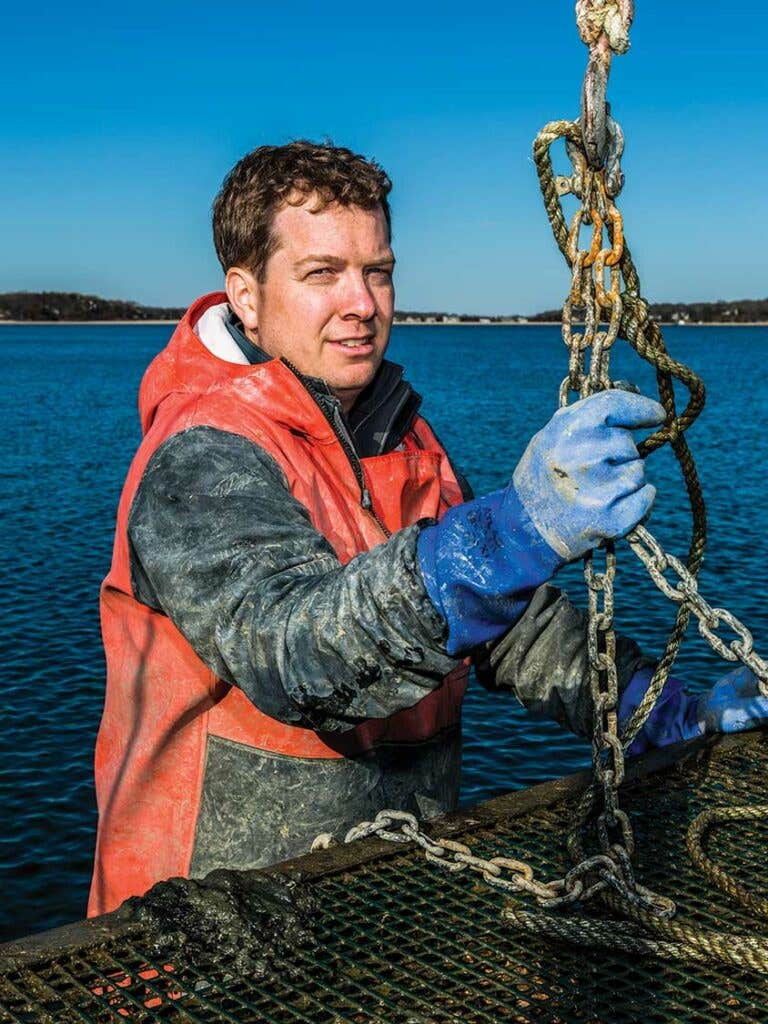
All Peeko oysters begin in a hatchery as seed—juvenile oysters, slightly older than the minuscule spats but still measured in millimeters. “I could be buying them as small as sesame seeds,” Stein says. “I’m buying them more the size of, like, gigante beans.” Smaller seed is cheaper to buy but less hardy. Larger seed is more expensive, but the oysters have a better chance of survival. When Mother Nature is feeling sympathetic and the trio does everything right, about 75 percent of the oysters will survive to reach adulthood. This isn’t always how it works. “There’s tuition that you’re gonna pay,” Stein says. “Going into a corporate job, of course you’re going to make mistakes. But a mistake in a corporate job doesn’t mean you lose 90 percent of your inventory.” In a lot of ways, Stein is an improbable candidate to become a shellfish farmer. Unlike many in the business, his lineage does not include watermen. (His ancestors probably kept kosher and never tasted an oyster.) Though Stein grew up vacationing on the North Fork of Long Island, he liked oysters only as much as any food—and, even then, food wasn’t his passion. “I mean, I enjoy going out to dinner,” he says. “I get Zagat in my email, but I barely ever open it, you know?” He started his career in management consulting, and later found his way into education software. When he was laid off in 2015, nothing about him seemed to suggest his next job would be anywhere besides another desk. Certainly no one who knows him would have guessed a job growing oysters. He isn’t a bold eccentric with a dream, nor does he seem to have anything to prove. As a captain, I doubt he’d go down with his ship, if only because he wouldn’t ever crash it in the first place.
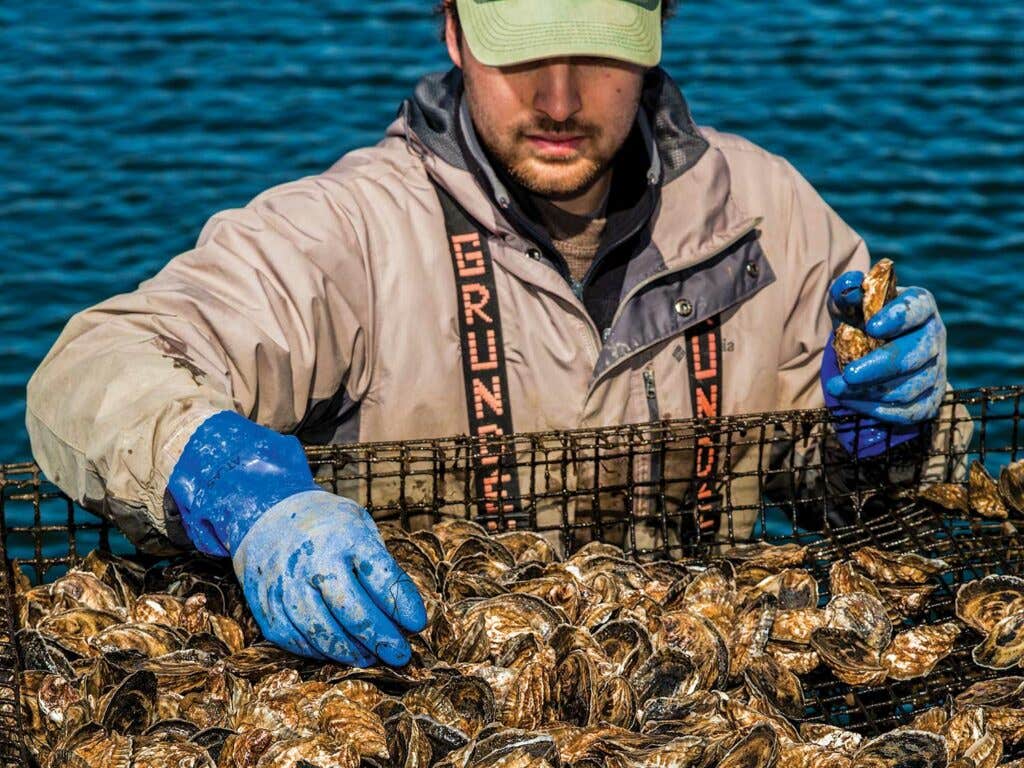
Though founding Peeko was a drastic change of direction, the decision came together in a slow, organic process. In the ’80s, Stein’s father was involved with Hebrew University, the institution responsible for inventing drip irrigation. Stein carried with him, into adulthood, a vague but steady interest in food-production systems. During the early days of unemployment, he started to read up on the various “ponics”—aeroponics, hydroponics, aquaponics. This developed into an interest in aquaculture, which eventually took root as a fixation on oysters.
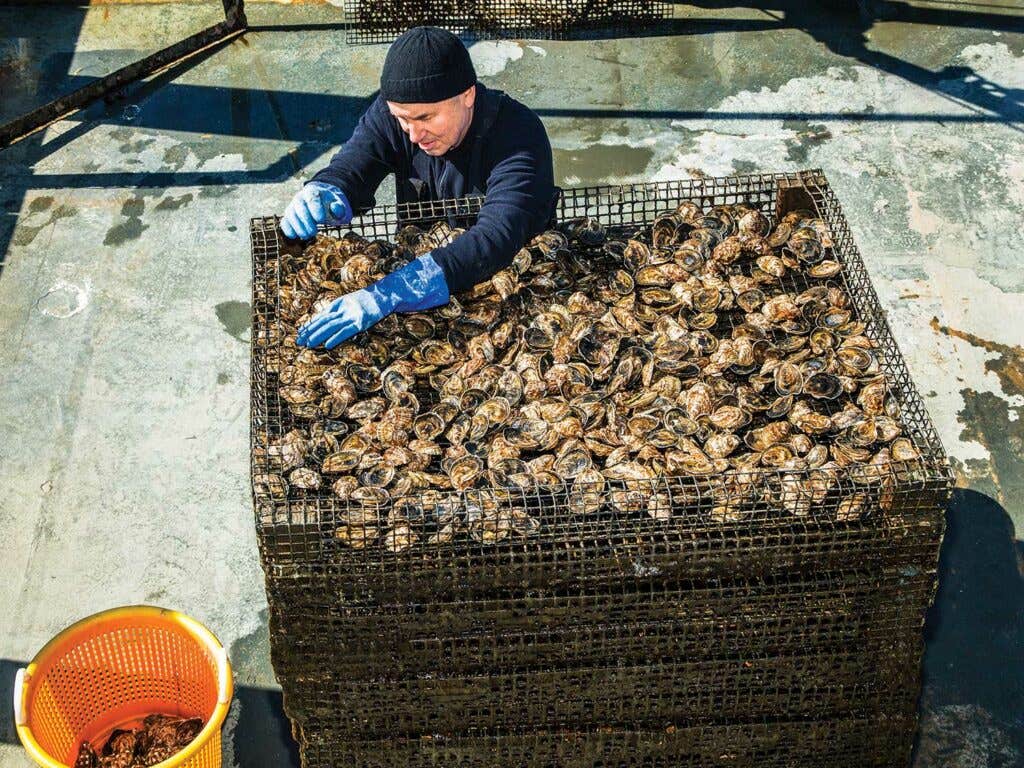
Stein learned the process by apprenticing with another Peconic Bay farmer. He says oysters are an industry with a curious mix of competition and cooperation. The market for oysters is booming, and there is more than enough demand to go around.
This isn’t to suggest that we’re destined to see a repeat of 19th-century overharvesting. Ironically, modern oyster cultivation has the potential to rectify some of the harms of the past two centuries. As filter feeders, oysters draw up water into their gills, digesting organic matter and plankton. A single oyster can filter up to 50 gallons of water per day, removing ammonia and nitrites in the process. At peak population, wild oysters cleaned the whole of New York Harbor every few days. Today’s oyster farmers have the potential to restore some of that filtration power. Compared with other meats, oysters produce more protein per square foot, with fewer resources. They turn free-floating organic matter in the water into a high-priced delicacy.
The investment is not a passive one. Running Peeko Oysters often involves strange and unexpected kinds of labor. Last year, around Christmas, the Peconic Bay froze over for the first time in recent memory. Sheets of ice entrapped Stein’s buoys, taking the cages below for a ride. “There’s all sorts of what they call ‘ghost gear’ strewn upon beaches after an ice situation like that,” Stein says. Finding his gear washed up on a beach is probably the best of the possible outcomes. In spring, he had plans to enlist a drone to help him search for the wandering cages. If he finds them, the lost oysters will in all likelihood be fine. Left to their own devices in the wild of the bay, oysters grow prolifically in reefs, craggy clusters of stuck-together shells.
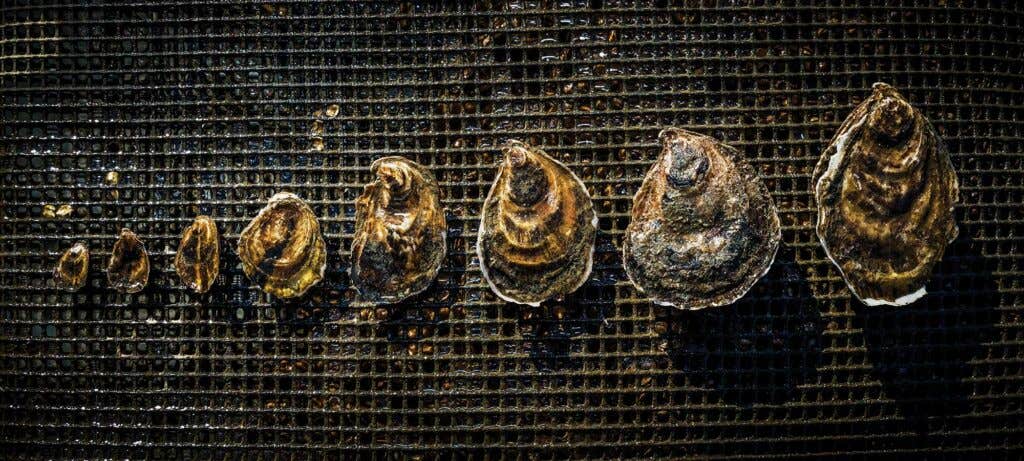
These wild oysters would not look much like the oysters found in restaurants today. They are long and leggy by nature—sometimes up to 10 inches. To avoid growing banana-shaped oysters, every three to six weeks during the growing season (when the water temperature is above 52 degrees), Stein removes the oysters and bounces them around in tumbler that looks like a giant bingo cage. Taking the oysters for a ride encourages their shells to grow deep rather than long. “As they go through the tumbler, that new growth gets chipped off. It’s kind of like pruning a plant,” he says. “The oyster takes the energy it was using to grow that new shell and uses it to grow a deeper, harder cup.”
Peter Stein of Stein Seafoods
Left to Right: A cage sinks into the bay; a half dozen oysters ready for shucking.
Three inches is the industry-standard market size, but it’s really a matter of personal style. Some farmers bring smaller oysters to market, but Stein says it makes him feel bad to think of someone spending money on something dinky.
With the exception of a rogue colony of European Belons in Maine, all East Coast oysters belong to the same species. Whether the chalkboard says Quonset Point or Chesapeake Bay, the oysters that arrive on the bed of shaved ice will always be Crassostrea virginica. But those geographical designations matter. Because oysters are filter feeders, their flavor and texture are tied to local factors: rainfall, runoff, strength of the tides.
Stein concedes that naming your oysters is mostly a concession to marketing. “My oysters aren’t much different from another guy’s. Especially another oyster that’s grown in the Peconic.” He says this in a way that seems out of place in our modern food culture. Even when he makes dramatic proclamations, they come off sounding matter-of-fact. “I want to start growing a million oysters a year,” he tells me. “In order to do that, we need an enormous amount of equipment—an enormous amount of infrastructure—and getting all of that set up requires an enormous amount of work.”
In winter, while his oysters are mostly dormant, Stein spends most of his time in Manhattan, buying new equipment and planning distribution. He lives on the Upper West Side, which doesn’t make for an easy commute when the oysters start growing again in spring. To get to the farm, he wakes up at 4:30 a.m. to help feed his infant daughter, then catches the subway down to Penn Station. From there, he takes a 90-minute train ride out to Ronkonkoma, where he gets in his truck at the Park & Ride and drives another hour to the dock in New Suffolk. Getting to the farm on La Perla takes 45 minutes. After working a full day on the water, he does the commute again, in reverse, arriving in Manhattan hopefully in time for dinner with his wife, sometimes towing a cooler full of oysters to one or more city chefs on the way. But unlike many entrepreneurs who make a point to dramatize their hustle, Stein does not present this commute as so extreme. “There are people who deal with worse professional and personal situations,” he says. “Does it suck on some days? Yeah.” At the end of last year’s growing season, Stein had a little under 500,000 oysters in the water. From there, the only limit is how fast his oysters grow. Though the industry has changed over 200 years, the appetites of New Yorkers have not. Nightly, at happy hours across the city, silver trays piled with ice are making their way onto tables and Instagram feeds. Lemons are being squeezed with reckless abandon. Shells no longer rot in the street, but the city’s hunger for oysters seems to be as insatiable as ever. In the Kitchen with Oysters
Between the dollar specials and those tiny forks, oysters have become a food we, by and large, order at restaurants. But they're not as high maintenance as you'd think: These briny bivalves travel well (good news for inland cooks) and, if stored dry and uncovered in a cold fridge, can keep for up to a week. Buy them from a place that has high turnover, pick up a cheap shucking knife, then try these summery ways to prepare them at home. —Stacy Adimando
Oyster Chowder with Bacon, Corn, and Fennel
One of the easiest ways to cook oysters is to slip them out of their shells and into quick-cooking soups, stews, and chowders. This one—a creamy, flourless chowder with fresh corn, crispy bacon, and some of the oysters’ natural juices—is the type of iconic summer recipe that should get tacked to the refrigerator door. Get the recipe for Oyster Chowder with Bacon, Corn, and Fennel »
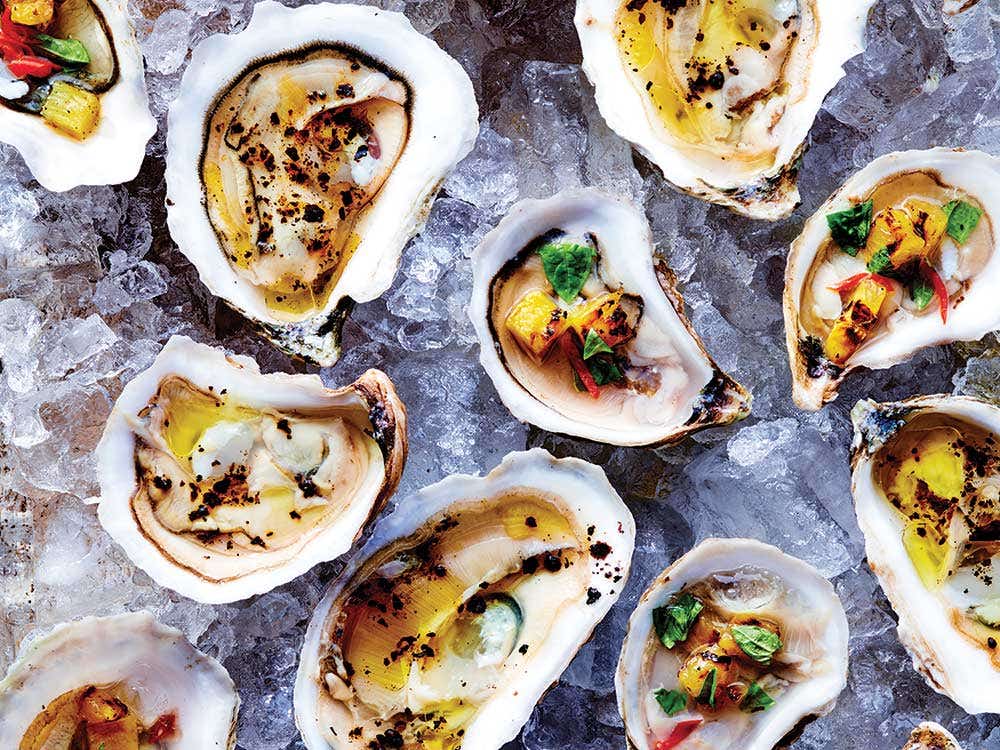
Keep Reading
Continue to Next Story
